miR-27a-3p targeting RXRα promotes colorectal cancer progression by activating Wnt/β-catenin pathway
- PMID: 29137318
- PMCID: PMC5669944
- DOI: 10.18632/oncotarget.19635
miR-27a-3p targeting RXRα promotes colorectal cancer progression by activating Wnt/β-catenin pathway
Abstract
This study aimed to elucidate how miR-27a-3p modulates the Wnt/β-catenin signaling pathway to promote colorectal cancer (CRC) progression. Our results showed that the expression of miR-27a-3p was up-regulated in CRC and closely associated with histological differentiation, clinical stage, distant metastasis and CRC patients' survival. miR-27a-3p mimic suppressed apoptosis and promoted proliferation, migration, invasion of CRC cells in vitro and in vivo. Whereas miR-27a-3p inhibitor promoted apoptosis and suppressed proliferation, migration, invasion of CRC cells in vitro and in vivo. Furthermore, RXRα was the target gene of miR-27a-3p in CRC. miR-27a-3p expression negatively correlated with RXRα expression in CRC tissues. The underlining mechanism study showed that miR-27a-3p/RXRα/Wnt/β-catenin signaling pathway is involved in CRC progression. In conclusion, our findings first demonstrate that miR-27a-3p is a prognostic and/or potential therapeutic biomarker for CRC patients and RXRα as miR-27a-3p targeting gene plays an important role in activation of the Wnt/β-catenin pathway during CRC progression.
Keywords: RXRα; Wnt/β-catenin pathway; colorectal cancer; miR-27a-3p.
Conflict of interest statement
CONFLICTS OF INTEREST The authors declare no potential conflicts of interest.
Figures
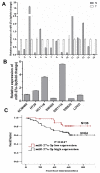
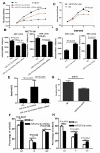

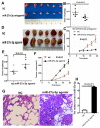
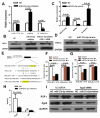

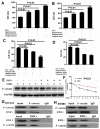
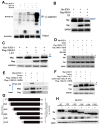
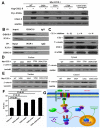
Similar articles
-
lncRNA RMST suppresses the progression of colorectal cancer by competitively binding to miR-27a-3p/RXRα axis and inactivating Wnt signaling pathway.Acta Biochim Biophys Sin (Shanghai). 2023 May 29;55(5):726-735. doi: 10.3724/abbs.2023065. Acta Biochim Biophys Sin (Shanghai). 2023. PMID: 37246895 Free PMC article.
-
In vivo and in vitro effects of microRNA-27a on proliferation, migration and invasion of breast cancer cells through targeting of SFRP1 gene via Wnt/β-catenin signaling pathway.Oncotarget. 2017 Feb 28;8(9):15507-15519. doi: 10.18632/oncotarget.14662. Oncotarget. 2017. PMID: 28099945 Free PMC article.
-
miR-27a-3p regulates intestinal cell proliferation and differentiation through Wnt/β-catenin signalling.Cell Prolif. 2025 Feb;58(2):e13757. doi: 10.1111/cpr.13757. Epub 2024 Sep 27. Cell Prolif. 2025. PMID: 39329245 Free PMC article.
-
Potential Role of Traditional Chinese Medicines by Wnt/β-Catenin Pathway Compared With Targeted Small Molecules in Colorectal Cancer Therapy.Front Pharmacol. 2021 Jul 26;12:690501. doi: 10.3389/fphar.2021.690501. eCollection 2021. Front Pharmacol. 2021. PMID: 34381360 Free PMC article. Review.
-
Wnt/β-Catenin Target Genes in Colon Cancer Metastasis: The Special Case of L1CAM.Cancers (Basel). 2020 Nov 19;12(11):3444. doi: 10.3390/cancers12113444. Cancers (Basel). 2020. PMID: 33228199 Free PMC article. Review.
Cited by
-
Oncogenic long intervening noncoding RNA Linc00284 promotes c-Met expression by sponging miR-27a in colorectal cancer.Oncogene. 2021 Jun;40(24):4151-4166. doi: 10.1038/s41388-021-01839-w. Epub 2021 May 28. Oncogene. 2021. PMID: 34050266 Free PMC article.
-
HypoxaMIRs: Key Regulators of Hallmarks of Colorectal Cancer.Cells. 2022 Jun 11;11(12):1895. doi: 10.3390/cells11121895. Cells. 2022. PMID: 35741024 Free PMC article. Review.
-
Hsa_circ_0004194 suppresses colorectal cancer progression via hsa-miR-27a-3p.Heliyon. 2024 Oct 20;10(20):e39549. doi: 10.1016/j.heliyon.2024.e39549. eCollection 2024 Oct 30. Heliyon. 2024. PMID: 39498085 Free PMC article.
-
Cross-Kingdom Interaction of miRNAs and Gut Microbiota with Non-Invasive Diagnostic and Therapeutic Implications in Colorectal Cancer.Int J Mol Sci. 2023 Jun 23;24(13):10520. doi: 10.3390/ijms241310520. Int J Mol Sci. 2023. PMID: 37445698 Free PMC article. Review.
-
The role of microRNAs in acrylamide toxicity.Front Nutr. 2024 Feb 22;11:1344159. doi: 10.3389/fnut.2024.1344159. eCollection 2024. Front Nutr. 2024. PMID: 38456012 Free PMC article. Review.
References
-
- Chambon P. A decade of molecular biology of retinoic acid receptors. FASEB J. 1996;10:940–954. - PubMed
-
- Mangelsdorf DJ, Evans RM. The RXR heterodimers and orphan receptors. Cell. 1995;83:841–850. - PubMed
-
- Heyman RA, Mangelsdorf DJ, Dyck JA, Stein RB, Eichele G, Evans RM, Thaller C. 9-cis retinoic acid is a high affinity ligand for the retinoid X receptor. Cell. 1992;68:397–406. - PubMed
-
- Mulholland DJ, Dedhar S, Coetzee GA, Nelson CC. Interaction of nuclear receptors with the Wnt/beta-catenin/Tcf signaling axis: Wnt you like to know? Endocr Rev. 2005;26:898–915. - PubMed
LinkOut - more resources
Full Text Sources
Other Literature Sources
Molecular Biology Databases

